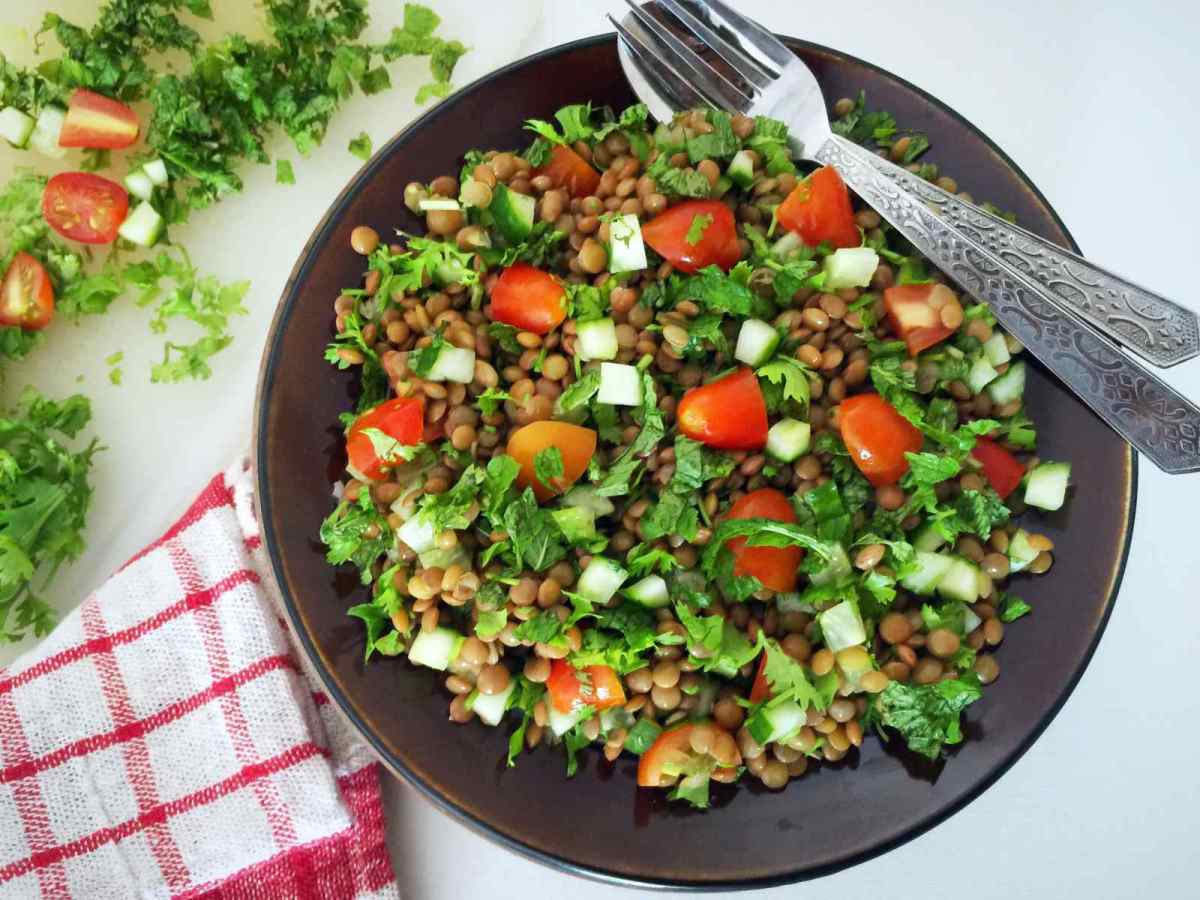Embark on a culinary journey through the vibrant world of Middle Eastern vegetarian cuisine, where bold flavors reign supreme. Imagine fragrant spices dancing on your palate, a symphony of textures from creamy dips to crunchy salads, and the rich history woven into each dish. This exploration unveils the secrets behind the region’s surprisingly diverse vegetarian traditions, from the sun-drenched shores of Lebanon to the ancient spice markets of Persia. We’ll delve into the unique ingredients, the masterful techniques, and the cultural significance that makes Middle Eastern vegetarian food an unforgettable experience.
This guide unveils five iconic vegetarian dishes, each with its own captivating story and step-by-step recipe. We’ll uncover the magic of key ingredients like fragrant herbs, zesty citrus, and earthy spices, revealing how they combine to create the signature bold flavors. Learn how to adapt these recipes to suit various dietary needs and create a delicious, balanced three-day vegetarian meal plan that showcases the best of Middle Eastern culinary artistry. Prepare to be inspired and tantalized!
Showcase of Popular Vegetarian Dishes
A vibrant tapestry of flavors and textures, Middle Eastern vegetarian cuisine offers a delightful exploration of culinary traditions. These dishes, passed down through generations, are not merely sustenance but integral parts of cultural celebrations and everyday life, reflecting the region’s rich agricultural heritage and inventive spirit. Each recipe tells a story, connecting us to the heart and soul of the Middle East.
Muhammara
Muhammara, a fiery red pepper dip, bursts with a captivating blend of sweet and spicy notes. Its vibrant color alone promises a taste adventure. The key to its success lies in the careful balance of roasted red peppers, walnuts, breadcrumbs, and pomegranate molasses, all contributing to its unique depth of flavor. The addition of a touch of chili flakes provides a welcome kick, making it a perfect accompaniment to pita bread or grilled vegetables.
- Roast 1 lb red bell peppers until skin is blackened. Place in a bowl, cover with plastic wrap, and let steam for 15 minutes. Peel and remove seeds.
- Combine roasted peppers, 1 cup walnuts, ½ cup breadcrumbs, 2 tbsp pomegranate molasses, 2 cloves garlic (minced), 1 tbsp olive oil, ½ tsp chili flakes, and salt to taste in a food processor.
- Process until smooth, adding more olive oil if needed to reach desired consistency.
- Serve chilled with pita bread or grilled vegetables.
Muhammara often graces tables during festive occasions and family gatherings, symbolizing abundance and shared joy. Its rich, complex flavor profile makes it a conversation starter, a testament to the culinary artistry of the region.
Falafel
These crispy, golden fritters are a Middle Eastern staple, beloved for their satisfying texture and herbaceous flavor. The core ingredient is chickpeas, which are soaked, then ground with herbs and spices before being formed into small balls and deep-fried to perfection. The result is a delightful explosion of flavor, a symphony of earthy chickpeas, fragrant herbs, and a satisfying crunch.
- Soak 1 cup dried chickpeas in water overnight.
- Drain and rinse chickpeas. Combine with ½ cup chopped parsley, ¼ cup chopped cilantro, 1 small onion (finely chopped), 2 cloves garlic (minced), 1 tsp cumin, ½ tsp coriander, ½ tsp salt, and ¼ tsp black pepper in a food processor.
- Process until a coarse mixture forms. Do not over-process.
- Form mixture into small balls (approximately 1 inch in diameter).
- Deep-fry in hot oil (375°F) until golden brown and crispy (about 3-4 minutes).
- Serve immediately in pita bread with tahini sauce, hummus, and salad.
Falafel’s popularity transcends cultural boundaries, representing a versatile and widely enjoyed vegetarian option, frequently featured in street food and casual dining settings across the Middle East.
Baba Ghanoush
This creamy eggplant dip is a testament to the transformative power of simple ingredients. Roasted eggplant, its smoky character enhanced by the fire, forms the base of this dip. The addition of tahini, lemon juice, and garlic creates a harmonious blend of flavors and textures, a delightful contrast between the smooth creaminess and the sharp tang.
- Roast 1 large eggplant until skin is blackened. Place in a bowl, cover with plastic wrap, and let steam for 15 minutes. Peel and remove seeds.
- Combine roasted eggplant, ¼ cup tahini, 2 tbsp lemon juice, 2 cloves garlic (minced), 2 tbsp olive oil, and salt to taste in a food processor.
- Process until smooth and creamy, adding more olive oil if needed.
- Serve chilled with pita bread or vegetables.
Baba Ghanoush is a staple at gatherings and celebrations, its simple elegance a reflection of the Middle Eastern emphasis on fresh, high-quality ingredients. Its rich flavor profile and smooth texture make it a culinary delight.
Tabbouleh
A refreshing salad bursting with bright, herbaceous flavors, Tabbouleh is a celebration of parsley. Finely chopped parsley forms the foundation of this dish, its vibrant green color a visual delight. The addition of bulgur wheat, mint, tomatoes, and lemon juice creates a harmonious blend of textures and tastes, a symphony of freshness and zest.
- Combine 1 cup bulgur wheat with 1 cup boiling water. Let stand for 15 minutes, then drain.
- Finely chop 2 cups of fresh parsley and ½ cup fresh mint.
- Combine bulgur, parsley, mint, 1 cup chopped tomatoes, ¼ cup finely chopped onion, 2 tbsp lemon juice, 2 tbsp olive oil, and salt to taste in a bowl.
- Mix well and serve chilled.
Tabbouleh is often served as a light and refreshing side dish, representing the region’s appreciation for simple, yet flavorful, preparations. Its vibrant colors and fresh taste make it a perfect accompaniment to heavier meals.
Dolma
These stuffed grape leaves are miniature culinary masterpieces, each a tiny parcel of flavor. Grape leaves, tender and slightly tart, are carefully filled with a mixture of rice, herbs, and spices. The resulting dish is a delightful combination of textures and tastes, a delicate balance of savory and slightly tangy notes.
- Soak 1 cup dried grape leaves in warm water for at least 30 minutes.
- Prepare the filling: Combine 1 cup cooked rice, ½ cup chopped parsley, ¼ cup chopped mint, 1 small onion (finely chopped), 1 tbsp tomato paste, 1 tsp lemon juice, salt and pepper to taste.
- Place a spoonful of filling onto each grape leaf and roll tightly.
- Arrange dolma in a pot, adding enough water to cover.
- Simmer over low heat for about 45 minutes, or until rice is cooked through.
- Serve warm or cold.
Dolma is a dish deeply rooted in Middle Eastern culinary tradition, often prepared for special occasions and family gatherings, showcasing the region’s ingenuity and resourcefulness in transforming simple ingredients into culinary delights.
Exploring Key Ingredients and Their Flavor Profiles
The vibrant tapestry of Middle Eastern vegetarian cuisine is woven with threads of bold, aromatic ingredients. Understanding these key components unlocks the secrets to recreating the region’s distinctive flavors at home. From the earthy depth of spices to the bright acidity of citrus, each ingredient plays a crucial role in creating a symphony of taste and texture.
Five Key Ingredients in Middle Eastern Vegetarian Cooking
The diversity of Middle Eastern cuisine means a vast array of ingredients are employed, but five consistently stand out for their impact on vegetarian dishes. These ingredients form the foundation of countless recipes, contributing unique flavors and textures that define the culinary landscape.
- Lemon: More than just a garnish, lemon juice is a vital component, providing a sharp, bright acidity that cuts through richness and balances heavier flavors. Its zest adds a fragrant citrus note, enhancing the overall aroma and taste. Imagine the vibrant zing of lemon juice in a refreshing fattoush salad, or its subtle brightness in a hearty lentil stew.
- Garlic: A staple in many cuisines, garlic in Middle Eastern cooking takes on a starring role. Its pungent, slightly sweet aroma and assertive flavor permeate dishes, adding a depth that is both comforting and exciting. Picture the robust garlic flavor in a creamy baba ghanoush or the subtle yet present notes in a flavorful mujadara.
- Olive Oil: The backbone of Mediterranean diets, olive oil is more than just a cooking medium in Middle Eastern cuisine. Its fruity, slightly peppery flavor adds a layer of richness and complexity to dishes, while its high smoke point allows for versatile cooking methods. Consider the smooth, luxurious texture of olive oil drizzled over a plate of hummus or its crucial role in sautéing vegetables for a flavorful tagine.
- Tahini: Made from ground sesame seeds, tahini boasts a rich, nutty, and slightly bitter flavor profile. Its creamy texture lends itself beautifully to dips, sauces, and dressings. Envision the creamy smoothness of tahini in hummus, its nutty depth in a vibrant halva, or its unique flavor adding complexity to a flavorful baba ghanoush.
- Dried Herbs and Spices: The aromatic heart of Middle Eastern cuisine, dried herbs and spices like sumac, za’atar, cumin, and coriander contribute layers of complexity and warmth. Their intense flavors can transform even the simplest dishes. Imagine the tangy, lemony notes of sumac sprinkled on a salad, the earthy warmth of cumin in a hearty stew, or the fragrant blend of za’atar seasoning a fluffy pita bread.
Herb and Spice Variations Across Middle Eastern Cuisines
While many herbs and spices are common across various Middle Eastern cuisines, subtle regional variations exist, reflecting local ingredients and culinary traditions. For instance, the use of specific spice blends, like ras el hanout in Moroccan cuisine, differs significantly from the more prevalent use of za’atar in Levantine cooking. These differences contribute to the unique character of each regional style.
Bold Flavors Through Ingredient Combinations
The “bold flavor” profile characteristic of Middle Eastern vegetarian cuisine is not achieved through a single ingredient but rather through artful combinations. The interplay of acidic lemon juice with the earthy cumin and the nutty tahini, for example, creates a complex and memorable flavor experience. Similarly, the combination of fragrant herbs like mint and parsley with the pungent garlic and the slightly bitter sumac results in a vibrant and refreshing taste. These synergistic relationships are key to unlocking the region’s distinctive culinary identity.
Recipe Variations and Adaptations

The vibrant world of Middle Eastern vegetarian cuisine offers endless possibilities for culinary exploration. Adapting classic recipes allows for personalization, catering to dietary restrictions, and unlocking new flavor dimensions. This section explores variations on a beloved dish, showcasing the flexibility and adaptability inherent in this rich culinary tradition. We will focus on Mujadara, a hearty lentil and rice dish, demonstrating how simple ingredient substitutions can dramatically alter the flavor profile and dietary suitability.
Mujadara Variations: A Symphony of Flavors
Mujadara, a staple in many Middle Eastern countries, provides a fantastic base for culinary creativity. Its simple composition of lentils, rice, and caramelized onions allows for numerous delicious adaptations. The following variations highlight the potential for exciting flavor profiles while maintaining the heart of the original dish.
- Classic Mujadara: This version uses brown or green lentils, long-grain rice, and generously caramelized onions. The resulting dish is earthy, comforting, and subtly sweet from the onions. A sprinkle of toasted pine nuts adds a delightful crunch and richness. Imagine the deep brown color of the caramelized onions contrasting beautifully with the speckled green of the lentils and the fluffy white rice. The aroma is a captivating blend of sweet, savory, and earthy notes.
- Spiced Mujadara with Pomegranate Seeds: This variation elevates the classic Mujadara with a burst of tartness and warmth. Adding a blend of warming spices like cumin, coriander, and a pinch of cinnamon to the lentils during cooking infuses the dish with a complex aromatic profile. The addition of juicy pomegranate seeds provides a vibrant pop of color and a tangy counterpoint to the richness of the lentils and onions. Picture the deep red jewels of the pomegranate scattered across the golden-brown rice and lentils, their tartness cutting through the warmth of the spices.
- Mujadara with Roasted Vegetables: This version introduces a medley of roasted vegetables, such as butternut squash, bell peppers, and zucchini, to add texture and sweetness. Roasting the vegetables beforehand intensifies their natural flavors and adds a smoky depth to the dish. The soft sweetness of the roasted vegetables complements the savory lentils and onions, creating a balanced and flavorful experience. Imagine the vibrant colors of the roasted vegetables mingling with the earthy tones of the lentils and rice, a colorful and texturally diverse plate.
Dietary Adaptations for Mujadara
Adapting Mujadara to suit various dietary needs is remarkably straightforward. The fundamental recipe is already naturally gluten-free and can easily be made vegan or even refined further.
- Vegan Mujadara: The classic Mujadara recipe is naturally vegan, provided that you ensure your vegetable stock (if used) is also vegan-friendly. Many recipes already omit stock altogether, relying on water for cooking the lentils and rice. The inherent simplicity of the dish makes it inherently suitable for vegan diets.
- Gluten-Free Mujadara: Mujadara is inherently gluten-free, as it does not contain any wheat-based ingredients. However, always check the labels of any pre-packaged spices or ingredients to ensure they are certified gluten-free, especially if you have a severe gluten intolerance.
From the humble beginnings of vegetarianism within Middle Eastern cultures to the modern adaptations and variations, this journey through bold flavors has revealed a cuisine rich in history, tradition, and vibrant taste. The recipes presented here are not merely instructions; they are invitations to experience the warmth, the generosity, and the exquisite tastes that define Middle Eastern hospitality. Armed with these recipes and a deeper understanding of the key ingredients, you can now recreate the magic of these dishes in your own kitchen, sharing the vibrant tapestry of flavors with friends and family. The adventure continues – experiment, adapt, and discover your own unique interpretations of these timeless classics.
Expert Answers
What are some common substitutions for ingredients I might not find easily?
Many ingredients can be substituted. For example, fresh herbs can often be replaced with dried (adjusting the quantity accordingly). Specific spices can sometimes be swapped for similar ones, although the flavor will vary slightly. Check individual recipes for suggestions.
Can these recipes be made ahead of time?
Many Middle Eastern vegetarian dishes are even more flavorful after sitting for a while, allowing the flavors to meld. Check individual recipes for specific storage and reheating instructions. Some components, like dips and salads, are best made the day of.
Are these recipes suitable for large gatherings?
Absolutely! Most of these recipes can easily be scaled up to feed a crowd. Simply multiply the ingredient quantities proportionally.
How can I make these recipes gluten-free?
Many traditional recipes are naturally gluten-free. However, be mindful of added ingredients like certain sauces or breading. Look for gluten-free alternatives like gluten-free bread crumbs or tamari instead of soy sauce.


